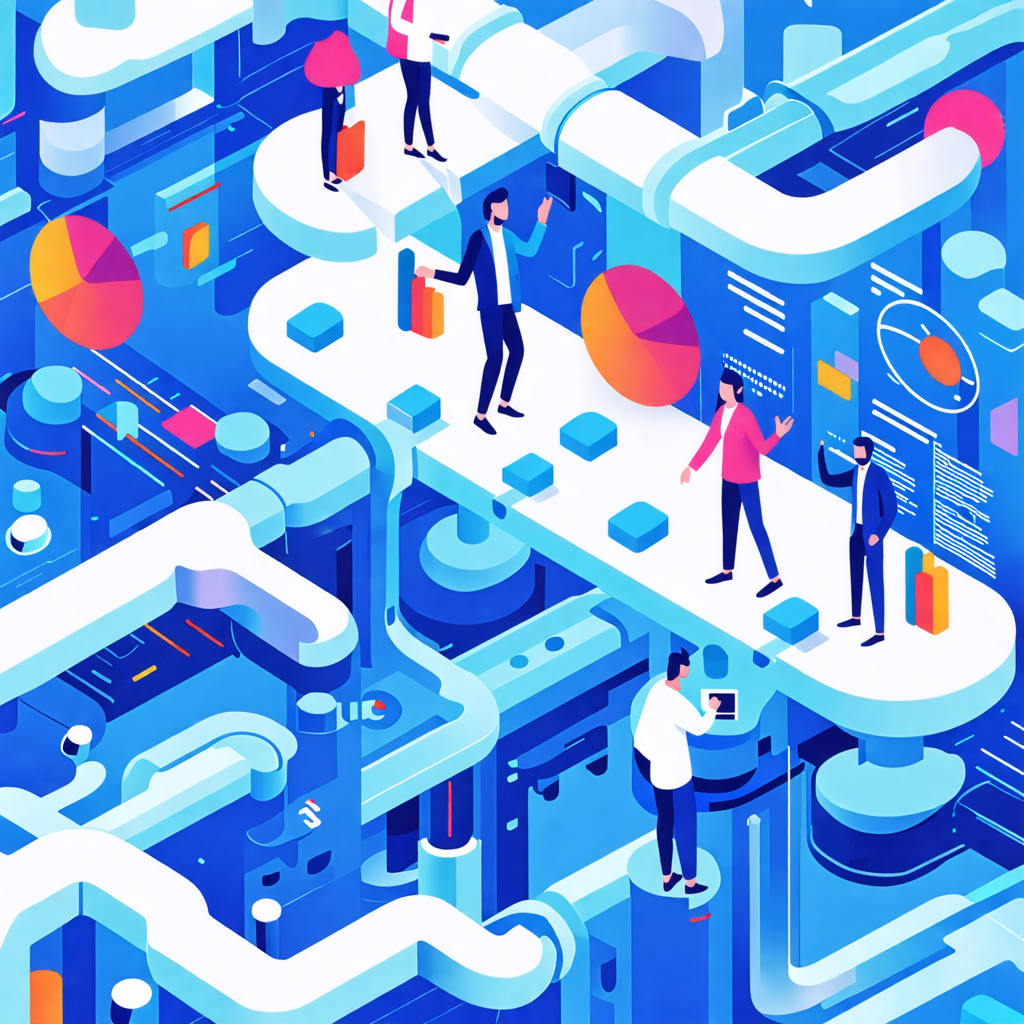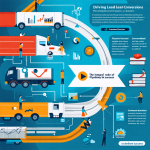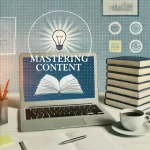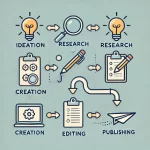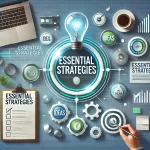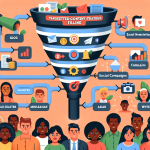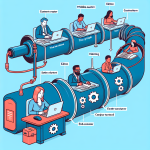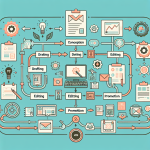This isn’t some complex, jargon-filled strategy. Content pipelines are plug-and-play, and they’re designed to save you time, money, and energy while helping your business grow. Let’s dive into how content pipelines work and why they are critical to your business’s success.
What is a Content Pipeline?
Simply put, a content pipeline is an automated system that creates, schedules, and delivers content based on your business goals and customer needs. It’s a powerful way to ensure that your brand is continuously engaging with your audience without you having to manually create every single piece of content. Think of it as an assembly line, but for content—where each step is optimized and automated to produce blog posts, social media updates, videos, emails, and more.
Imagine entering your business details—industry, location, audience—and hitting a button that generates hundreds of pieces of content for an entire year. It’s as simple as that. And the best part? Each piece of content is strategically aligned with the buyer’s journey, helping you move potential customers through awareness, consideration, and, ultimately, conversion.
Why Do You Need a Content Pipeline?
Without a content pipeline, creating content can feel like an endless task. You’re constantly brainstorming, writing, editing, and publishing, all while running your business. It’s easy to see why content creation often gets pushed to the back burner.
Here’s where a content pipeline makes a difference:
- Consistency: Your audience gets new content regularly, keeping your business top of mind without you having to lift a finger.
- Efficiency: Instead of creating content piecemeal, you plan and execute an entire year’s worth of content in advance.
- Goal-Oriented: Every piece of content serves a purpose, whether it’s to educate your audience, drive conversions, or enhance brand loyalty.
How Content Pipelines Work: Simple, Streamlined, and Strategic
Here’s how easy it is to unlock the power of a content pipeline:
1. Input Basic Business Information
Start by entering some basic details about your business: industry, website URL, location, language, and your customer persona (e.g., Are they a working parent? A tech enthusiast?). These simple inputs are used to personalize the content to match your business and target audience.
2. Automatic Content Generation
Once the system knows who you are and who you’re talking to, it will automatically generate content tailored to your business. This could include blog posts, social media updates, email campaigns, video scripts, and more. Whether you’re focusing on educating your audience, highlighting your unique selling points, or offering solutions to common pain points, the content is generated with specific business objectives in mind.
3. Full Buyer’s Journey Coverage
The content pipeline will also align with the buyer’s journey. Content is strategically designed for each stage:
-
- Awareness: Introduces your brand, educates your audience, and builds trust.
- Consideration: Provides deeper insights, showcases your expertise, and helps potential customers compare options.
- Decision: Pushes for conversion with clear calls to action, compelling offers, and testimonials.
4. One-Click Execution
Once the content pipeline is set up, you can schedule posts for an entire year in just one click. That’s it. The system takes care of the rest, publishing content at optimal times and ensuring that your business is continuously active and engaging with your audience.
The Impact of an Effective Content Pipeline
So, what does all this mean for your business? The results speak for themselves:
- Increased Traffic: Consistent, high-quality content drives organic traffic to your website and social media platforms.
- Lead Generation: With content tailored to your audience’s needs, you can attract more qualified leads, nurturing them through the buyer’s journey.
- Improved Conversions: Well-placed calls-to-action and strategically crafted content ensure that more of your audience takes the next step, whether that’s signing up for your newsletter, booking a consultation, or making a purchase.
- Brand Authority: By consistently delivering valuable content, your business becomes a trusted resource in your industry, enhancing your brand’s authority and credibility.
How to Get Started with Content Pipelines
Ready to unlock the full potential of your business with a content pipeline? Here’s how you can get started:
- Analyze Your Current Content Strategy: Take a look at your current content efforts. What’s working? What’s not? A content pipeline will build on what you’re already doing well and fill in the gaps.
- Identify Your Business Goals: What do you want to achieve with your content? More traffic? Higher conversions? Better customer retention? Make sure your pipeline aligns with these goals.
- Enter Your Details: Once you’ve identified your goals, it’s as simple as entering your industry, website, location, language, and target persona. The content pipeline does the rest.
- Launch and Monitor: Once the content is live, monitor its performance. Use analytics to track traffic, engagement, and conversions. The more you know about what’s working, the more you can refine your pipeline for even better results.
Getting started with a content pipeline is easy, and the payoff can be huge. Imagine freeing up your time to focus on other aspects of your business while your content continues to drive growth.
A Smarter Way to Grow Your Business
Effective content pipelines aren’t just about generating more content—they’re about generating the right content, at the right time, for the right audience. By automating the process and aligning content with the buyer’s journey, you can ensure your business is always putting its best foot forward.
In just one click, you can go from struggling to keep up with content creation to having a full year’s worth of strategically crafted content that boosts traffic, nurtures leads, and drives conversions. Ready to unlock business growth? Start building your content pipeline today.
Related Posts:
